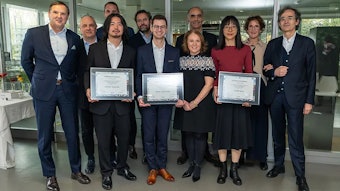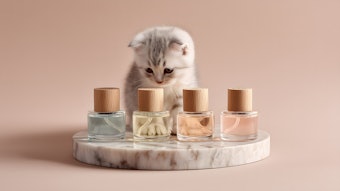
Every bottle of perfume contains the world: under the perfumer’s creative wand, cultural and geographic boundaries will vanish, allied in a fragrance. While modern chemistry allowed the birth and rise of perfumery at the end of the 19th century, natural ingredients continue to be sought after, and new natural ingredients are added to the perfumer’s catalog every year. Over the last decade, consumers have increasingly been looking for sustainable and safe ingredients, at a time when perfumery naturals face challenges in our globalized agricultural world: massive use of pesticides, land availability and water scarcity, to name a few.
History of IFF-LMR
LMR was created in 1983 with the objective of delivering premium quality natural extracts for the perfume industry. The selection of the highest quality ingredients, developing innovative technologies was the first aim of LMR. The acquisition by IFF in 2000 made possible the vertical integration of LMR most strategic supply chains: LMR focused on improving the vegetal and its agriculture. Ten years ago, IFF-LMR started to invest R&D resources in the fields with the farmers’ communities, thanks to exclusive local partners.
Assessing, improving and ensuring the sustainability of natural ingredients is an absolute necessity for the future of naturals. In 2014 IFF-LMR chose to collaborate with Quantis International, a consulting firm specializing in Life Cycle Assessment (LCA), already involved in the cosmetics and perfume industries. Together, they adapted this recognized tool to assess the environmental footprint of natural ingredients.
What is LCA?
Internationally recognized, the LCA is a multi-criteria approach to assessing potential impacts of products and services throughout their life cycle on the human health and on the environment; from the extraction of raw materials to their end of life, including transportation, production and use. Among other applications, LCA can identify opportunities to improve the environmental performance of the products and services at various stages of their life cycle. The LCA is a standardized method (ISO Standards 14040 to 14044) with 4 combined stages (see F-1), which will be discussed in further detail below.
Definition of the Objective and Scope
The objective of the LCA is defined by the application: eco-conception, comparison or environmental statement. The goal of the study is specified, as well as the way in which the results will be disclosed.
In LCA, products are evaluated on the basis of their function. The system must specify the functions of the product studied, the functional unit, UF, chosen (see below), the scope and the limits of the studied system. It is also at this stage that the different rules for the calculations applied to the study are defineda.
The UF functional unit is the quantitative reference to which all components of the life cycle, the inventory calculations and impact assessment are related. This parameter must be clearly defined in space and time, and be measurable. A correct definition of the UF functional unit is essential to make the results of the LCA operational and relevantb.
Don't Stop Reading!
This isn't the full article. To read on, make sure to click over to the digital edition for the full article and other great insight.











